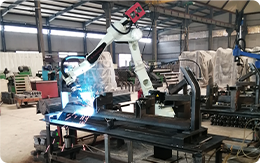 Afrikaans
Afrikaans  Albanian
Albanian  Amharic
Amharic  Arabic
Arabic  Armenian
Armenian  Azerbaijani
Azerbaijani  Basque
Basque  Belarusian
Belarusian  Bengali
Bengali  Bosnian
Bosnian  Bulgarian
Bulgarian  Catalan
Catalan  Cebuano
Cebuano  Corsican
Corsican  Croatian
Croatian  Czech
Czech  Danish
Danish  Dutch
Dutch  English
English  Esperanto
Esperanto  Estonian
Estonian  Finnish
Finnish  French
French  Frisian
Frisian  Galician
Galician  Georgian
Georgian  German
German  Greek
Greek  Gujarati
Gujarati  Haitian Creole
Haitian Creole  hausa
hausa  hawaiian
hawaiian  Hebrew
Hebrew  Hindi
Hindi  Miao
Miao  Hungarian
Hungarian  Icelandic
Icelandic  igbo
igbo  Indonesian
Indonesian  irish
irish  Italian
Italian  Japanese
Japanese  Javanese
Javanese  Kannada
Kannada  kazakh
kazakh  Khmer
Khmer  Rwandese
Rwandese  Korean
Korean  Kurdish
Kurdish  Kyrgyz
Kyrgyz  Lao
Lao  Latin
Latin  Latvian
Latvian  Lithuanian
Lithuanian  Luxembourgish
Luxembourgish  Macedonian
Macedonian  Malgashi
Malgashi  Malay
Malay  Malayalam
Malayalam  Maltese
Maltese  Maori
Maori  Marathi
Marathi  Mongolian
Mongolian  Myanmar
Myanmar  Nepali
Nepali  Norwegian
Norwegian  Norwegian
Norwegian  Occitan
Occitan  Pashto
Pashto  Persian
Persian  Polish
Polish  Portuguese
Portuguese  Punjabi
Punjabi  Romanian
Romanian  Russian
Russian  Samoan
Samoan  Scottish Gaelic
Scottish Gaelic  Serbian
Serbian  Sesotho
Sesotho  Shona
Shona  Sindhi
Sindhi  Sinhala
Sinhala  Slovak
Slovak  Slovenian
Slovenian  Somali
Somali  Spanish
Spanish  Sundanese
Sundanese  Swahili
Swahili  Swedish
Swedish  Tagalog
Tagalog  Tajik
Tajik  Tamil
Tamil  Tatar
Tatar  Telugu
Telugu  Thai
Thai  Turkish
Turkish  Turkmen
Turkmen  Ukrainian
Ukrainian  Urdu
Urdu  Uighur
Uighur  Uzbek
Uzbek  Vietnamese
Vietnamese  Welsh
Welsh  Bantu
Bantu  Yiddish
Yiddish  Yoruba
Yoruba  Zulu
Zulu Creating an Engaging Feeder Idler for Enhanced Efficiency and Performance in Industrial Applications
Understanding Feeder Idlers An Essential Component in Material Handling
In various industrial applications, particularly in the mining and construction sectors, the management of bulk material handling is crucial for operational efficiency. One of the key components that facilitate this process is the feeder idler. This article aims to delve into the significance of feeder idlers, their functions, and the advantages they bring to conveyor systems.
What is a Feeder Idler?
Feeder idlers are specialized rollers that support and guide the conveyor belts used in material handling systems. Positioned along the conveyor's length, these idlers play a critical role in maintaining the belt's alignment and ensuring smooth movement of materials. They help reduce friction and wear on the conveyor belt, contributing to its longevity and overall performance.
Functionality of Feeder Idlers
The primary function of feeder idlers is to support the weight of the materials being transported. As bulk materials move along the conveyor, the idlers bear the load and provide stability. By doing so, they help to maintain the belt's tension and prevent slippage, which could lead to inefficiencies or even equipment damage.
Additionally, feeder idlers are designed to minimize the wear and tear on the conveyor belt itself. By providing rolling surfaces that reduce drag, these idlers help lower energy consumption and extend the lifespan of the conveyor system. This is particularly important in industries where heavy materials are transported over long distances.
Types of Feeder Idlers
Feeder idlers are available in various designs and configurations to suit different conveyor systems and operational requirements. The most common types include
1. Flat Idlers These are the standard idlers with a simple flat surface, used primarily for transporting materials in a horizontal direction.
2. Trough Idlers Designed with a concave shape, trough idlers are ideal for carrying loose materials. The trough shape helps contain the materials, reducing spillage and enhancing the efficiency of the system.
feeder idler

3. Impact Idlers These idlers are installed at points where heavy materials are loaded onto the conveyor. Their robust design absorbs the impact, protecting the belt from damage and ensuring optimal operation.
4. Return Idlers Found on the return side of the conveyor, these idlers support the belt as it returns to the loading point. They help maintain the belt's structure and are essential for smooth operation.
Benefits of Using Feeder Idlers
The incorporation of feeder idlers in conveyor systems offers numerous advantages
- Increased Efficiency By ensuring smooth movement and reducing belt slippage, feeder idlers enhance the overall efficiency of material transportation.
- Reduced Maintenance Costs The protective role of feeder idlers minimizes wear on the conveyor belt, leading to lower maintenance costs and fewer replacements over time.
- Enhanced Safety Properly functioning feeder idlers help prevent accidents caused by material spillage and equipment malfunctions, contributing to a safer work environment.
- Energy Savings Reduced friction and drag translate into lower energy consumption, making the operation more cost-effective and environmentally friendly.
Conclusion
Feeder idlers are indispensable components in the realm of bulk material handling. Their ability to support, align, and protect conveyor belts plays a vital role in the efficiency and safety of industrial operations. By selecting the right type of feeder idler for specific applications, businesses can optimize their material handling processes, reduce costs, and improve overall productivity. As industries continue to grow and evolve, the importance of understanding and implementing effective material handling solutions will remain paramount.
-
Revolutionizing Conveyor Reliability with Advanced Rubber Lagging PulleysNewsJul.22,2025
-
Powering Precision and Durability with Expert Manufacturers of Conveyor ComponentsNewsJul.22,2025
-
Optimizing Conveyor Systems with Advanced Conveyor AccessoriesNewsJul.22,2025
-
Maximize Conveyor Efficiency with Quality Conveyor Idler PulleysNewsJul.22,2025
-
Future-Proof Your Conveyor System with High-Performance Polyurethane RollerNewsJul.22,2025
-
Driving Efficiency Forward with Quality Idlers and RollersNewsJul.22,2025





























